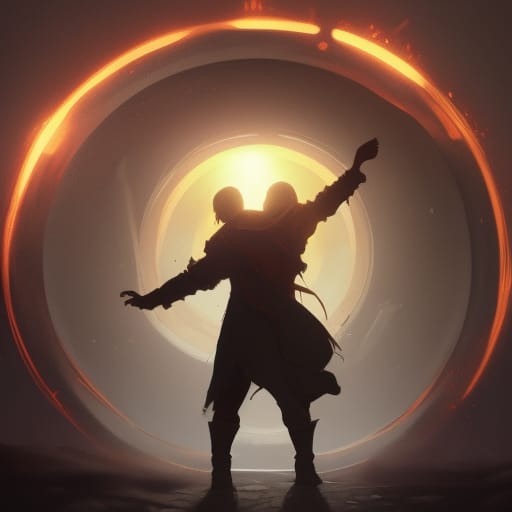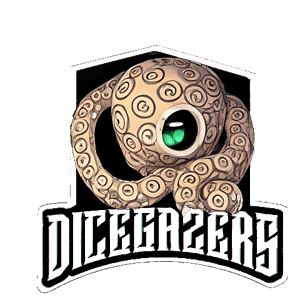Palladium Books has game mechanics that span all of its genres for rifts character creation and classes. If you are familiar with palladium fantasy, Robotech, Heroes Unlimited, Skraypers, or any others then you know the basic rules of creating a Rifts character. I want to do a basic rundown of that process and then give some tips for further optimizing/clarifying the process.
Rifts Character Creation
The Rifts Ultimate edition has character creation broken down into 8 steps. This process starts on page 279 of the Ultimate edition.

Rifts Character Creation- Step 1. Attributes
There are 8 attributes in the Rifts system but instead of going into detail on each let’s talk about the status quo. What I find in many role-playing games is that we make a huge deal out of character stats. However in the grand scheme of playing, players rarely ever get past level 5, and there are only 4-6 usually. I point this out because while the players are the focus of the gaming experience, they are not what makes the universe up.
Simply put, instead of focusing harshly on limiting your player’s stats, equipment, gear, and the like, decide on a power level for the game. Are you playing average characters? If so then roll the dice as stated. If you want above average allow for 1 extra die and then choose the best 3 (if 3 was the stat to roll for example).
When we roleplay though oftentimes we are making games for players to be the heroes so in these cases its more appropriate to be doing say 5d6 for a 3d6 stat and choosing the best 3. Alternatively, you could simply state what a heroic stat range is and let the players pick accordingly for their character background, the feel of their character, etc. This last option usually requires a lot of trust but hopefully, you are or will get there.
buy a pdf version of the rifts ultimate edition from DriveThruRPG
Step 2. HP and SDC
The standard in Rifts is hit points and structural damage capacity. Your hit points are touched after SDC and when you start taking this kind of damage it becomes lethal. I like to think of SDC as bruising and the like. Rifts gets a bad rap though because these health pools are almost never used because a 2nd damage capacity is available.
Step 3. Mega damage
When in a super magic-rich environment a new damage capacity called mega damage, or MDC for short becomes possible. Mega damage is generally only available to humans and other mortals from magic, psionics, and armor (either body, vehicle, or other). 100 HP or SDC is the equivalent of 1 MDC, however, most MDC beings and armor are immune to all SDC damage.
So when players first start playing Rifts and get access to these options they may get power-hungry or just destroy things left and right. Generally speaking, MDC weapons are not allowed within most city limits, especially Coalition territory.
This means that when you go into many cities you will be required to stow power armor, vehicles, or other large MDC items outside the city. This can also include infantry rail guns like the NG-202, plasma rifles, or particle beam weapons, etc.
Step 4. Psionic chances
All humans have a chance of having minor or major psionics (2 or 6-8 powers respectively). Standardly you roll percentile for this. Note- sometimes when you are going through character creation you want to add psionics to the character build, in this case, pick minor or major rather than rolling.
When I started playing again in 2012 I had never had a psionic character. At the time I was going to play a mage and wanted to add some psionics just to test it out. It’s not such a game-breaking idea so I recommend GMs allow it if players are doing it as part of their character design. It shouldn’t be done just for more power.
Step 5. Pick an OCC and skills
There are basically 4 or 5 categories of character classes to pick from: practitioners of magic, psionics, adventurer & scholars, combat, and racial. We can add a few more though when you take other books into account like the superhero from Heroes Unlimited.
These are very broad categories with a wide range of character class options. Combat for example could be anything from a gunslinger out of New West to a Robot pilot. A further list will be given later.
Step 6. Alignment
Oh man good old alignments. This concept is something that originated with Dungeons and Dragons way back in the 70s and has persisted until now. I find it to be a fairly antiquated way of deciding what players can and can’t do but in general, it can help new players create a guideline of how their character is going to behave in society. For that reason, I haven’t done away with it altogether.
Step 7. Experience system
Yet another old system, though many like it so to each their own. In my experience (haha.. see what I did there) you won’t get to max level so it’s really not worth looking at the experience tables all that much. If you do the average XP rewards per game and play every week it will take about 7 or 8 years to get a single character to level 15.
Our approach with experience and leveling is instead to get players through the early levels more quickly. You can either have players level after 1 game of the current level they are at or the next level. So either 1 or 2 game sessions to get from level 1 to level 2. If you play this way it will still take years to get to level 15 but those early boring levels won’t drag out so long.
Step 8. Rounding out your character
This section is fantastic, with 8 or so percentile tables for things like age, weight, number of siblings, etc. I use this table even when playing other games because it’s so simple and easy to get an idea of how your character sees the world, where he/she was born, and more.
If you haven’t check out this article on how to build and run a Rifts campaign
Rifts RPG Character Classes
Class breakdowns work as such: Men at Arms are combat-focused characters who are in some way augmented. They may have cybernetics, bionics, psychic warriors, robot armor or power armor, or some variation. These characters are interested in combat and hire themselves out as mercenaries.
Adventurers are people who are more skill focused and are more interested in people or places. These classes are either after information, and knowledge or want to in some way help better the daily lives of the people around them.
Practitioners of Magic are people who focus on Magic, Dimensional Traveling, dominating monsters, and casting obscure and specialized magic. Many become adventurers, while few become mercenaries.
Psychics are people who have powerful mental abilities. While mages use the magical energy around them psychics use their own innate mental strength. They are normally driven to test their will against the horrors of the world. Some become adventurers and fewer even become mercenaries.
D-Bees or Dimensional Beings. Some classes are naturally wired toward exploration and others are bred for combat.
Dragon Hatchlings and other creatures of magic. These are the more powerful beings who are innately talented and have an unquenchable thirst for knowledge. They are driven by their instincts and hungers.
Speed Up Character Creation
Player Characters can simply be distilled down to these simple stats: Combat Stats, Skills, and Equipment. Knowing your combat bonuses, weapons damage and skill percentages are really the basics a player and GM need to know. Add in your armor MDC and you’re ready to go.
NPC or player example- average “fighter”: +1 or +2 strike/parry/dodge, 15 HP, 25 SDC, Medium body armor 45 MDC, Helmet 35 MDC, Vibro Knife 1d6 MDC, Wilks laser pistol 1d6 MDC, Tailing 65%, Track humanoids 50%, intimidation 45%. These are just some basic examples of quick Rifts NPC character creation ideas, make your own for your games.
What Do I Need To Create A Rifts Character
This comes down partially to how you are going to play. If you have a GM with most of the books and you are in person then you just need to go over early and browse some books. If you are online, or simply want the books yourself, then you’ll want to get the Rifts Ultimate Edition at the very least.
Those playing a space game will want Phase World at the very least.
For those playing some kind of superhero in Rifts then Heroes Unlimited Books and or the Rifts Conversion book will be needed.
If you are playing a mage then I highly recommend the Book of Magic. If you happen to be playing a Shifter then I personally recommend the Megaverse builder, Anvil Galaxy, the conversion book (for summons), and Dyval or Hades for more summon options.
Looking at different races is a tremendous amount of fun after you get the basics down and the best books to start with are D-bees of North America and the conversion book with the Phase World race generator after you have exhausted your options.
What Character Should I Play In Rifts
You should absolutely play what interests you. When playing Rifts you should understand that combat does not consist of the same tank, healer, DPS combination that is common with other games. If you have a mixed group of characters like a dragon hatchling, rogue scholar, shifter, and wilderness scout, then none of them really are “tanks”, nor do they really fit any of the other standard “roles”.
This means that what you play should be based on the game type you and the GM have decided on and your own personal interests related to that. If you want to complement what others play then ask what their skills are and choose something that gives the group more options.
Rift’s character creation should be looked at from your personal viewpoint and not what the group “wants” or “needs” as it is a survival game. Now you can do this, and perhaps it’s helpful to everyone however I’m simply saying look at the options and ask what you want to play.
What Are The Different Strength Types In Rifts
Rifts do not specifically have “strength” classes, and “dexterity” classes. Some classes may have more strength than others or give a bonus. More than that though are the addition of races. If you play a Demigod rogue scholar, he will be supernaturally strong compared to a human rogue scholar. Even if their strength score is the same the demigod will be able to lift and carry far more weight.
Check out these 17 tools to improve your roleplaying experience.
